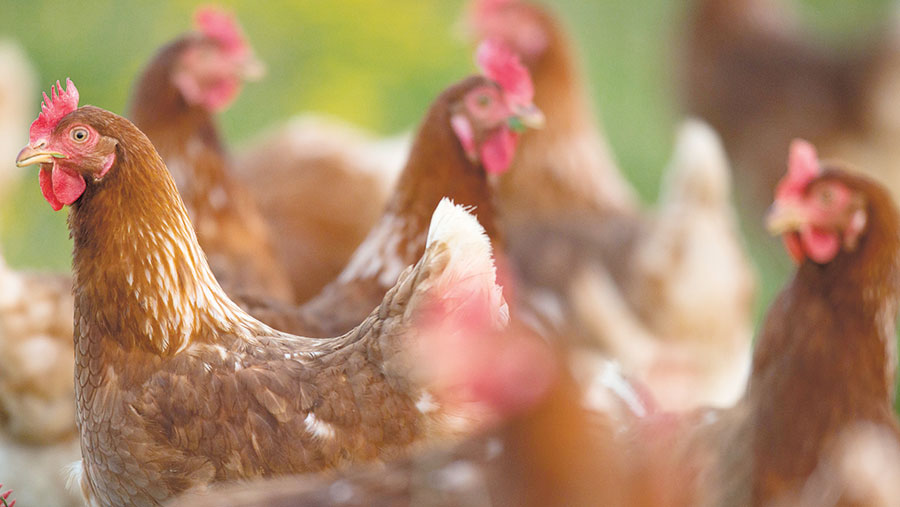Outlook 2018: Poultry sector is well placed for growth
 © Tim Scrivener
© Tim Scrivener The broiler sector has benefited from the continued move by consumers towards leaner meat, which saw the monthly volume of poultry meat rise more than 12% in the year to July 2017 to 16,900t a month.
At present, the UK is the fourth-largest poultry meat producer in the EU, and is about 75% self-sufficient in poultry meat.
It is perhaps the sector of UK farming that could most easily scale up post-Brexit, if trade arrangements made imports less competitive, says Andersons consultant Lily Hiscock.
See also: How collaboration can help build resilient farm businesses
Summary
- Broiler sector has forged ahead in 2017, driven by rising consumer demand for leaner meat
- Egg industry faces more pressure and requires significant investment to meet retailer free-range targets
- Opportunities for significant growth and added value, particularly after Brexit
“The broiler sector is an area of potential diversification, which offers regular income, the option of using home-grown grain, and production of manure to benefit crops.”
The egg industry faces more volatility and consumer pressure. The results to July 2017 show commercial layer chick placings slipped 0.4% compared with the previous year, says Ms Hiscock.
“For the UK egg industry to be completely free range by 2025, in line with retailer targets, about 570 more units (at 32,000 birds) would need to be installed over the next seven to eight years.
“That equates to 1.5 units/week and an investment in excess of £500m, which looks very unlikely.”
The egg sector has also been hit by food safety concerns. In July 2017, 700,000 imported Dutch eggs were potentially contaminated with Fipronil. Post-Brexit, educating the consumer about the quality of domestic production is likely to be even more important, says Ms Hiscock.
Although self-sufficiency in the poultry sector is unlikely, there are opportunities within it for significant growth and added value, particularly following Brexit, she adds.
“This sector is an option for other farmers looking to diversify to strengthen their farm business and spread risk.
“Existing poultry producers should identify areas for improved productivity, such as feed efficiency and mortality, to ensure sustainability for the long term.”
Targets for intensive broilers are a feed conversion ratio (FCR) of 1.79 or less, and less than 4% mortality, and for enriched colony egg production an FCR of 1.72 a dozen eggs and 3.5-4% mortality.
Andersons Outlook
The above is based on Andersons Outlook 2018. Copies of the full publication can be downloaded from www.andersons.co.uk by clicking on ‘Publications and Events’ or by requesting a printed copy on 01664 503200.
Andersons is running a series of seminars in the spring, looking at the prospects for UK agriculture in greater detail. For more information, please go to www.theandersonscentre.co.uk/seminars.
2 March – RAF Club, Piccadilly, London
6 March – Harper Adams University, Newport, Shropshire
7 March – Castle Green Hotel, Kendal, Cumbria
8 March – Carfraemill Lodge Hotel, Lauder, Berwickshire
9 March – York Racecourse, York, North Yorkshire
13 March – Yew Lodge Hotel, Kegworth, Leicestershire
14 March – Perth Racecourse, Perth
16 March – Newmarket Racecourse (Rowley Mile), Newmarket, Suffolk
20 March – Royal Agricultural University, Cirencester, Gloucestershire
21 March – Exeter Racecourse, Exeter, Devon
22 March – Salisbury Racecourse, Salisbury, Wiltshire
23 March – East of England Showground, Peterborough, Cambridgeshire
